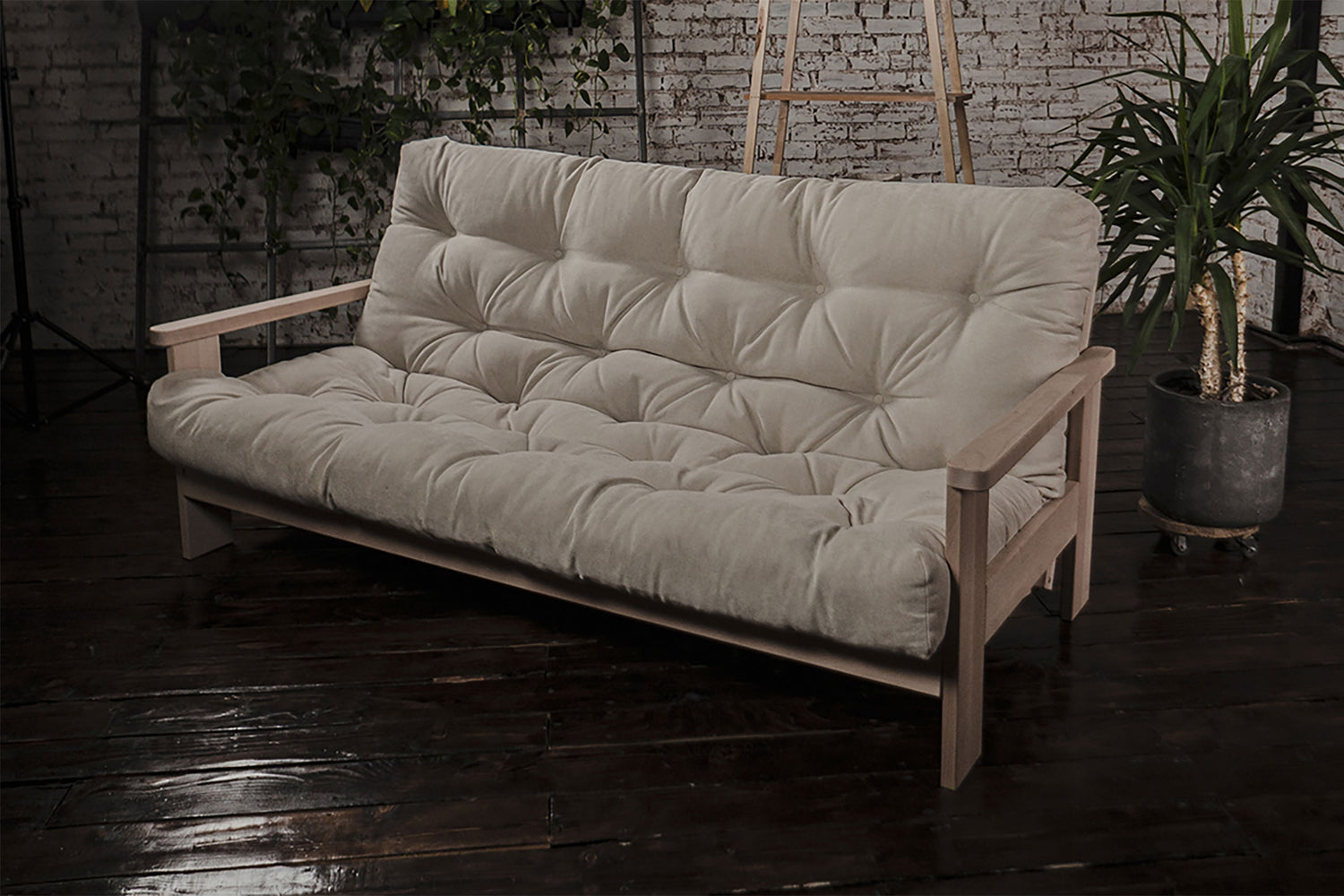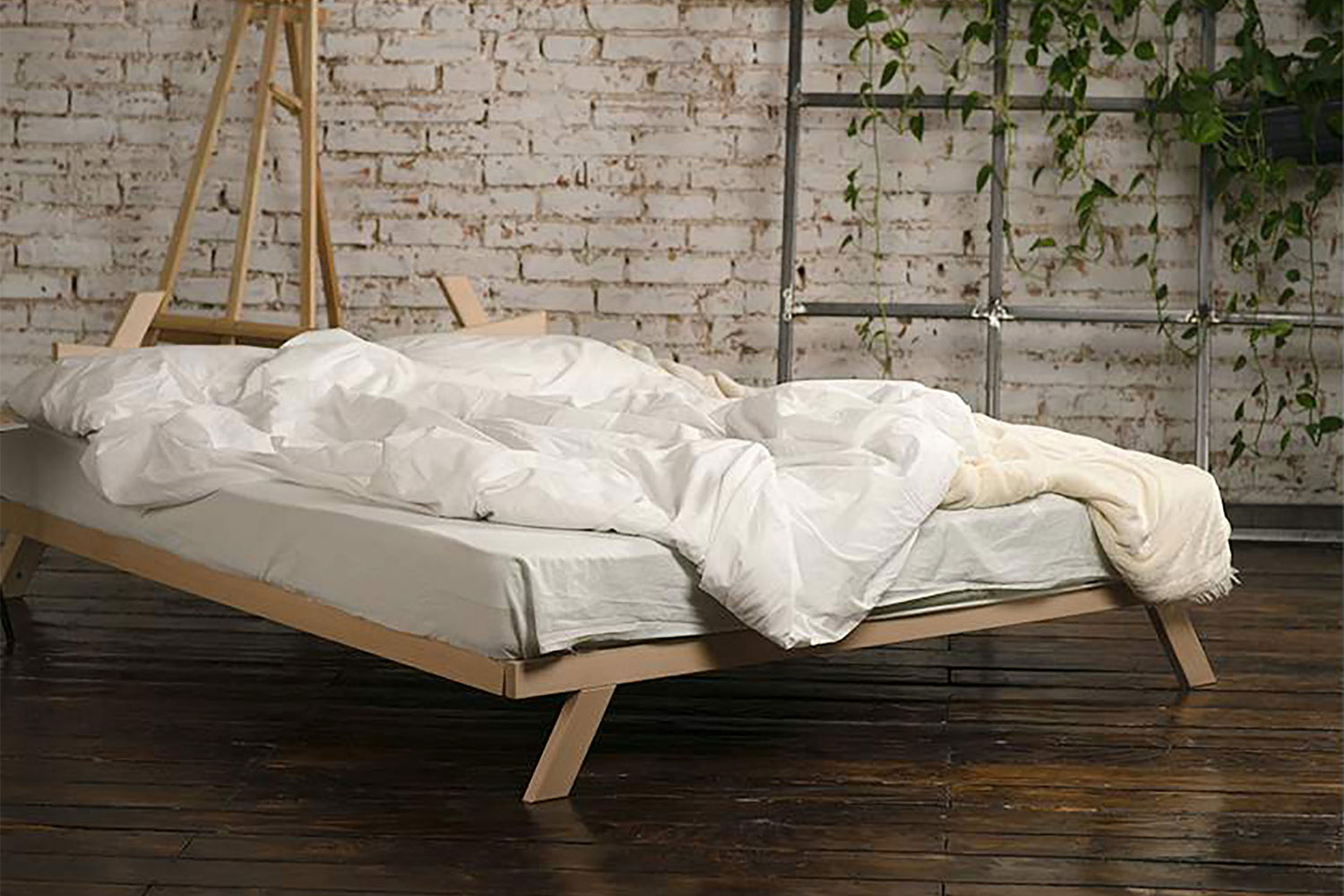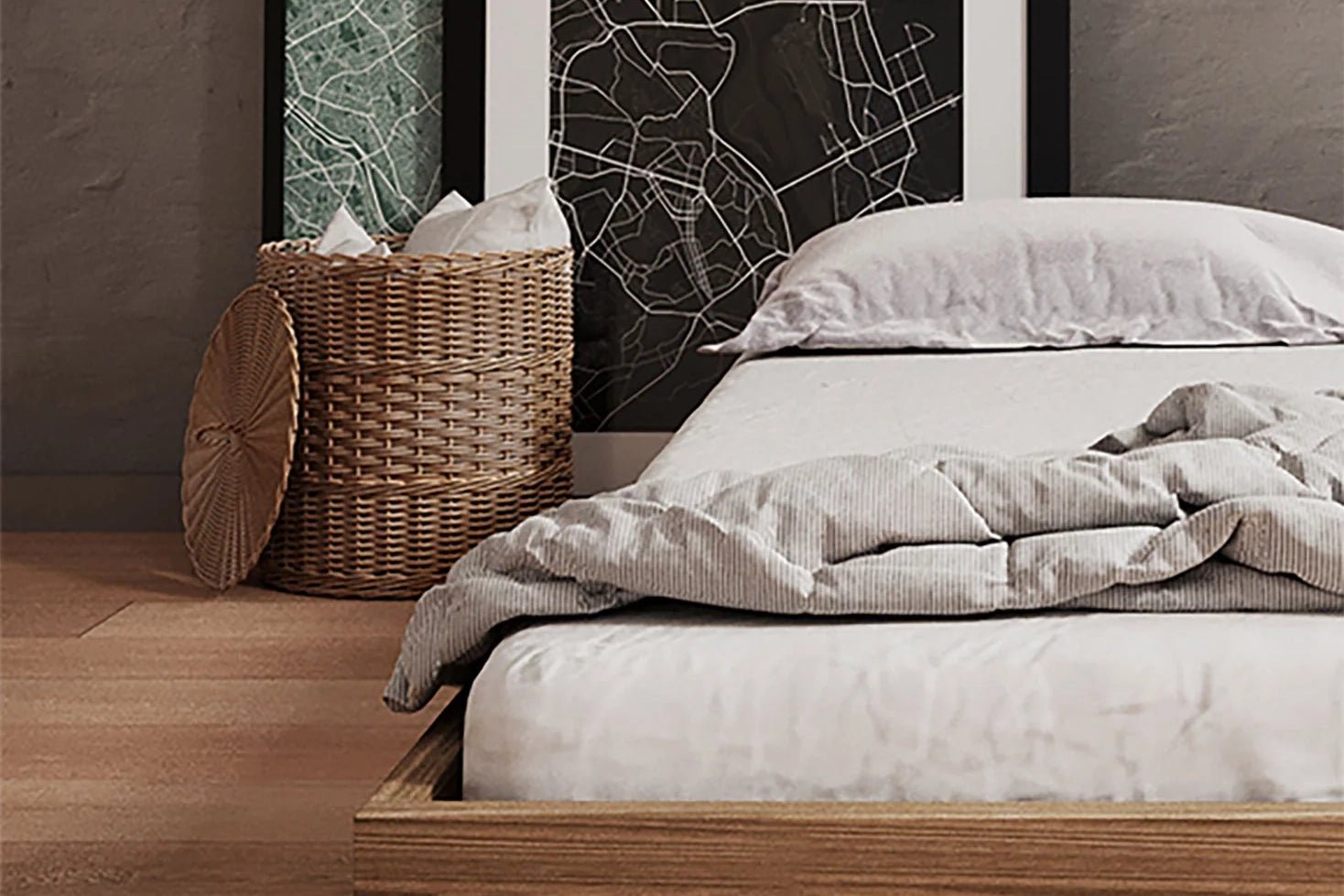
How Does a Futon Compare to a Regular Mattress?
Share
If you’re considering whether a futon or a regular mattress would be the right choice for your home, you're not alone. Japanese futons, in particular, have become increasingly popular for their minimalist design, flexibility, and eco-friendly materials. While futons offer unique benefits, they differ in significant ways from traditional Western-style mattresses. Let’s dive into the key differences to help you choose the perfect option for your lifestyle, comfort needs, and space requirements.
Key Differences Between a Futon and a Regular Mattress
Construction and Material Differences
Japanese futons, like the popular shikibuton, are typically made from cotton, wool, or other natural materials that create a firm yet comfortable sleeping surface. These futons are often thinner than conventional mattresses, providing a sleep experience closer to the ground. On the other hand, standard mattresses are built with layers of springs, memory foam, or latex, resulting in a thicker structure with more cushioning. While futons are easily rolled or folded for storage, regular mattresses are more cumbersome and are designed to remain stationary.
Function and Versatility
The versatility of futons is unmatched. A futon mattress can be used both as a bed and, when combined with a futon frame, as a couch, making it ideal for flexible living spaces. Many Japanese futons are directly placed on tatami mats or the floor, aligning with traditional Japanese minimalism. Regular mattresses, however, are dedicated to platform bed use only, often paired with a box spring or a bed frame, which takes up more space and is less adaptable.
Portability and Storage
Japanese futons can be folded and stored away with ease, a feature that is especially valuable for small homes or multipurpose rooms. This is particularly true for shikibutons, which are designed to be rolled or folded daily. In contrast, traditional mattresses are bulky and difficult to move, making them less suitable for adaptable spaces or easy storage.

Comfort and Sleep Quality: Futon vs. Regular Mattress
Support and Firmness
Japanese futons are known for their firm support, which can promote healthy spinal alignment. This is ideal for people who prefer a supportive, grounded sleep surface. Regular mattresses, however, come in a wider range of firmness levels, from plush to extra firm, allowing more customization for pressure relief and contouring. For sleepers who need a more supportive bed but still want a bit of cushioning, a firm futon with added tatami matting could be the ideal solution.
Pressure Relief and Spinal Alignment
The design of regular mattresses allows for enhanced pressure relief, especially with materials like memory foam or hybrid layers that contour to the body. Futons, by contrast, offer firmer support and may not relieve pressure points to the same extent, although they do promote a grounded sleep experience that many find beneficial for back health. The level of comfort may depend on individual sleep style and health needs.
Health and Lifestyle Factors
For those with allergies or sensitivity to synthetic materials, an organic Japanese futon made from cotton or wool can be an excellent choice. Many futons use 100% natural and organic materials, appealing to those who prefer a non-toxic, eco-friendly sleeping option. Traditional mattresses, while offering more variety, often include chemicals or synthetic materials, which may be a consideration for allergy-sensitive sleepers.

Choosing the Right Size: Futons vs. Regular Mattresses
Available Sizes in Futons and Regular Mattresses
Just like regular mattresses, Japanese futons come in standard sizes like twin, full, and queen. These futon mattress sizes make it easier to find a fit for any space, whether it’s a compact apartment or a guest room. However, a queen or full-size futon may vary slightly in dimension from a regular mattress, so it’s essential to confirm sizing if you plan to use it with sheets or accessories intended for Western beds.
What Size Sheets Fit a Futon?
One common question is whether standard sheets will fit a futon mattress. The answer depends on the futon’s thickness and dimensions. Typically, fitted sheets work well, though futon-specific covers made from organic cotton or durable fabrics can offer a snug fit and extra protection. Queen or full-size sheets may need slight adjustments to fit snugly over thicker futons.
Types of Futons Explained
Shikibuton vs. Shiki Futon vs. Japanese Futon
The terms “shikibuton” and “shiki futon” can often be confusing, as they refer to similar yet distinct styles of Japanese bedding. A shikibuton is a traditional Japanese floor mattress that is thinner and designed to be used on tatami mats. A “shiki futon” may refer to a similar minimalist style of bedding, often with slight variations in material or thickness. Meanwhile, “Japanese futon” generally refers to this entire category of versatile floor mattresses that can be rolled and stored when not in use.
Durability and Maintenance
Lifespan Comparison
Japanese futons generally last around 5-7 years, depending on usage and care. Traditional mattresses, especially those made with high-quality materials, may last 7-10 years or more. However, futons tend to show wear over time more visibly, as they’re used directly on the floor or tatami mat and are moved frequently.
Maintenance Needs
One advantage of futons is their ease of maintenance. They can be aired out regularly, helping to maintain freshness and prevent odors. Spot cleaning is typically all that’s required. Regular mattresses may need vacuuming or special treatments for cleanliness, but they’re generally less flexible when it comes to airing out or cleaning.
How to Care for a Futon
To extend a futon’s lifespan, it’s essential to rotate it regularly, fold or roll it for airing, and use a protective cover. Organic cotton covers not only protect the futon but also add a layer of softness and can be easily washed.

Cost Considerations
Initial Investment
Japanese futons are often more affordable than traditional mattresses, making them a great choice for budget-conscious shoppers or those who prefer a minimalist lifestyle. Premium futons made from organic materials might cost more, but they are still generally less expensive than high-end mattresses with advanced features like memory foam.
Long-Term Value
While regular mattresses may have a longer lifespan, futons offer excellent value for money due to their affordability, low maintenance costs, and versatility. For those who need adaptable furniture or an eco-friendly sleep option, a high-quality futon could be an excellent investment.
Pros and Cons of Futons vs. Regular Mattresses
| Pros | Cons | |
| Futons |
|
|
| Regular Mattresses |
|
|
Is a Futon Right for You? Choosing Based on Lifestyle and Needs
Ultimately, the decision between a futon and a regular mattress depends on personal needs. Japanese futons are perfect for those who value flexibility, affordability, and a more natural, grounded sleep experience. They’re also a good match for minimalist or multipurpose spaces, guest rooms, and eco-conscious buyers. Regular mattresses, on the other hand, may be the preferred option for those seeking additional comfort, durability, and targeted support for long-term use.
Futons and regular mattresses each offer unique benefits and limitations. Japanese futons are ideal for flexible, minimalist living, while traditional mattresses provide a wider range of comfort and longevity. By understanding the differences, as well as your own lifestyle needs, you can make an informed choice that best supports your comfort, budget, and living space.











